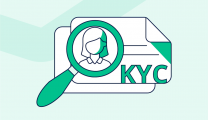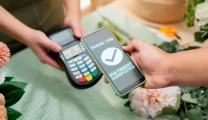What is Retail Personalization?
Retail personalization involves tailoring the shopping experience to the individual preferences and behaviors of each customer. This can include everything from personalized product recommendations to targeted marketing campaigns based on past purchases. Some common examples of retail personalization include:
- Product recommendations: Suggesting products based on a customer’s browsing or purchase history
- Personalized promotions: Offering discounts or deals on products that a customer has shown interest in
- Targeted email marketing: Sending emails based on a customer’s previous purchases or browsing history
- Customized content: Providing personalized content on your website or social media channels based on a customer’s interests
- Loyalty programs: Rewarding customers for their loyalty and repeat purchases

Retail personalization
Who Can Benefit from Retail Personalization?
Any retailer, big or small, can benefit from implementing retail personalization strategies. Whether you run an online store or a brick-and-mortar location, personalizing the shopping experience can improve customer loyalty, increase sales, and boost brand awareness. However, some types of retailers may be more suited to retail personalization than others. For example:
- E-commerce stores: Online retailers have access to vast amounts of customer data, which can be leveraged to provide personalized product recommendations, targeted email marketing campaigns, and more.
- Fashion and beauty retailers: These types of retailers often have customers who are loyal to specific brands or products, making it easier to personalize the shopping experience.
- Luxury retailers: High-end retailers can use personalization to enhance the exclusivity of their brand and create a sense of luxury for their customers.
- B2B retailers: Business-to-business (B2B) retailers can use personalization to tailor their offerings to the specific needs of their clients.

Any retailer can benefit from implementing retail personalization strategies.
How to Implement Retail Personalization: Best Practices
Collect and analyze customer data
Collecting and analyzing customer data is critical to understanding your customers’ preferences and behaviors. Use tools like Google Analytics or CRM software to gather insights into how customers interact with your brand.
Use AI and machine learning
Artificial intelligence (AI) and machine learning can help automate the process of personalizing the shopping experience. Algorithms can analyze customer behavior and recommend products based on their past purchases or browsing history.
Provide multiple touchpoints
Personalization shouldn’t stop at the checkout page. Providing personalized content on your website, social media channels, and email marketing campaigns can help create a cohesive and customized shopping experience.
Be transparent about data usage
Customers are becoming increasingly concerned about privacy and data usage. Being transparent about how you collect and use customer data can help build trust and increase loyalty.

Best Practices of Retail Personalization
Retail Personalization Examples
Netflix: Netflix is known for its personalized recommendations based on users' viewing history and preferences. The streaming service analyzes data such as previously watched shows and ratings to suggest new content that matches individual tastes. This personalization feature helps users discover relevant movies and TV shows, enhancing their overall viewing experience.
Sephora: Sephora, a cosmetics retailer, utilizes personalization both online and in-store. Its Beauty Insider loyalty program offers personalized product recommendations, birthday gifts, and access to exclusive promotions based on customers' beauty preferences and purchase history. Sephora also employs digital technologies in-store, such as Color IQ, to provide pers
The North Face: The North Face, an outdoor apparel and equipment company, has embraced personalization through its "Personal Shopper" feature. This feature allows customers to connect with an AI-powered chatbot on The North Face website or through Facebook Messenger.












Replies to This Discussion